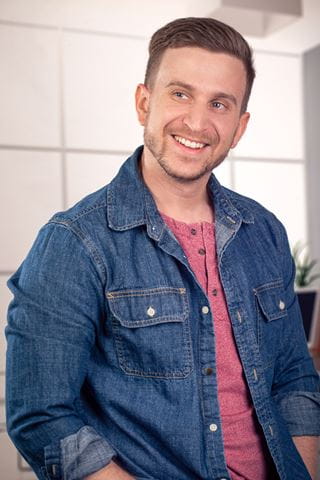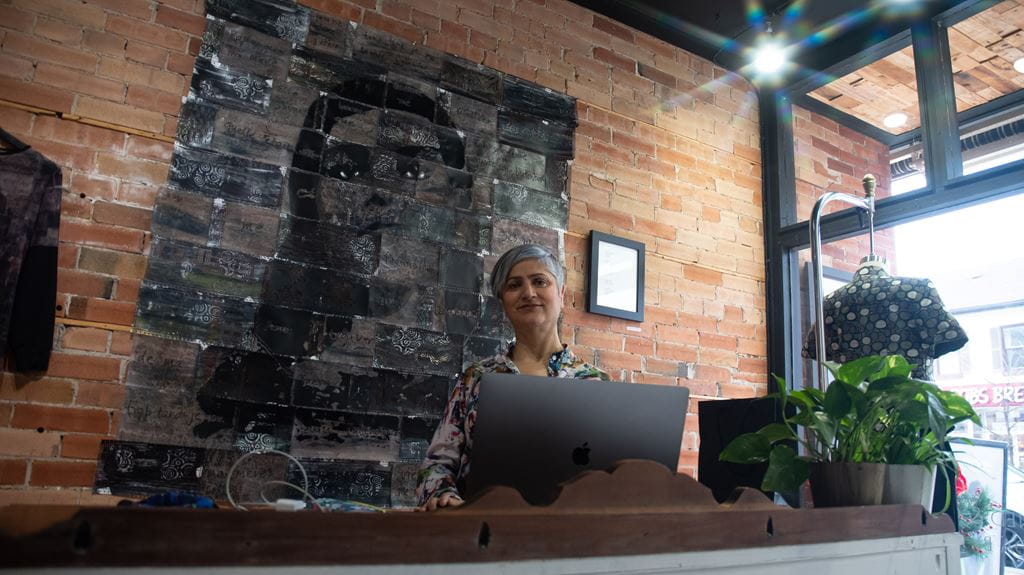
Business of the arts: FAAD’s entrepreneur graduates driven by passion for creative freedom
 by Vitusha Oberoi – Jan 23, 2023
by Vitusha Oberoi – Jan 23, 2023 Bobby Chiu (Computer Animation ’04), Keith Chang (Graphic Design ’92), Brendan Muir (Bachelor of Game Design ’18), and Anu Raina (Crafts and Design Fabrics ’10) started their own ventures after graduating from Sheridan’s Faculty of Animation, Arts & Design – with little else to back them except their skills and raw courage – and succeeded in realizing their dream of giving a free reign to their creativity as artist-entrepreneurs.
They also had to overcome many hurdles along the way – the toughest being their lack of training in running a business. This challenge is now being addressed by the Creative Industries Management program at the Pilon School of Business, designed to prepare graduates as managers and entrepreneurs in the arts, with an understanding of management, financing and marketing.
Professor Jean Desormeaux, who coordinates the program, says students at FAAD who want to launch their own projects should consider learning the business side of the creative industries. “At FAAD, students are really project-focused. Being entrepreneurs and applying marketing, revenue and audience sensibilities, gives them the ability to make the impactful projects they want to produce in their careers. In Pilon School of Business' Creative Industries Management program, we teach media makers, including gamers, musicians, theatrical and other media players, how commerce and artistic vision and applications can work hand in hand to ensure quality work.”
Bobby Chiu: A high achiever on a roll
Computer Animation ’04
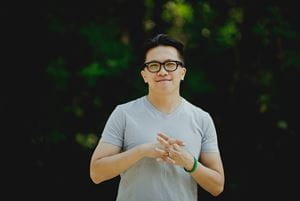 Twenty years ago, Bobby Chiu put together a to-do list for his career goals. The last time he looked at it, he had checked off every box.
Twenty years ago, Bobby Chiu put together a to-do list for his career goals. The last time he looked at it, he had checked off every box.
In 2016, Chiu was among the three Sheridan alumni to win an Emmy for the film Niko and the Sword of Light. He is the founder of the Toronto-based Imaginism Studios, specializing in pre-production character and concept design for film, TV, gaming, and publishing. He is the man behind LightBox Expo, the annual animation jamboree that brings together hundreds of artists, studios such as Disney and Netflix, and fans under one roof in Los Angeles. He’s also the founder of Schoolism.com, an online school for artists, and co-owner of magma.com, an online, free, go-to tool for art collaboration that transcends boundaries across the world to brings artists, teams and communities together.
“So how do I get so much done and how do I run all these different companies and then still work on movies and games and all sorts of things? The secret is that I am really focused. I find out how to make something work, and how to teach that to others. I then create a team to take it forward and once that’s done, I move on to the next thing, and then the thing after that. All of a sudden, one is running multiple companies,” he says.
With a family background of “zero art,” an entrepreneur dad who would use dinner time as an opportunity to teach his children the finer points of doing business, and his own dogged pursuit of the arts, Chiu has used the prism of his own experiences to identify opportunities for success. After high school, he tried to follow in his father’s footsteps by taking up business studies at Toronto Metropolitan University, but lost interest within a few months and decided to follow his own passion for the arts. He joined Sheridan and graduated from the Animation program in 2002, barely a few months after 9/11. Chiu had his heart set on the American animation industry, but the United States had tightened its borders at the time and jobs were hard to come by. He returned to Sheridan a year later to join Computer Animation. This time, he did find a job upon graduation, but as data manager in a production company.
Taking chances to fulfill dreams
“That didn’t involve a lot of art, you know, so I ended up quitting it,” he says. Along with his wife, fellow artist Kei Acedera, and his brother, Ben Chiu, he launched Imaginism Studios and together with two other Sheridan graduates - Jim Bryson and Adam Jeffcoat of StudioNX - created Niko and the Sword of Light, the first-ever hand-drawn, traditionally animated comic book app. The independently funded app was an instant hit and occupied the top spot in its category in over 30 countries in the App Store. It was produced as an animated television series by Amazon Studios and Titmouse Animation Studio, and the pilot won the Emmy in 2016.
“So how do I get so much done and how do I run all these different companies and then still work on movies and games and all sorts of things? The secret is that I am really focused. I find out how to make something work, and how to teach that to others.” - Bobby Chiu
At the time, Chiu and Acedera, who had worked as concept artists for Disney’s Alice in Wonderland, were in Paris creating 40 new works based on the original Lewis Carroll stories for a gallery show called Alice Through the Looking Glass. The dates clashed with the Emmys and they couldn’t be there in person to receive the award. “We are humbled and really appreciate the acknowledgement, but like many artists and creators, we don't do it for awards. We do it to create and we were busy creating,” he says.
Turning difficulties into business opportunities
Summing up his trajectory as an entrepreneur, Chiu says he looked at the major things that artists needed and tried to do something about it. “I started a studio because I couldn't get a job – nobody can fire me from my own studio. When I started Schoolism, there was no online school and there was no way to learn from artists halfway across the continent without physically going there. I made an online school so I could keep learning and have some fun travelling. I didn't find a place for us all to converge as artists and talk shop, so I created Lightbox Expo. Not all artists can afford the software or a good computer to install the programs they need - I took up a piece of software in its alpha stage and helped develop it as magma.com where anybody in the world can go and start painting professionally for free.”
At heart, Chiu is a teacher, the profession going back a few generations in his family. Nothing gives him more satisfaction than to see how his different projects are sharing knowledge from experts with budding animators not only in North America, but in different parts of the world. “That’s something I’m really proud of.”
Keith Chang: A career filled with adventure, excitement
Graphic Design ’92
 Five years after graduating from Sheridan’s graphic design program, Keith Chang launched his own production company, Silverpoint, with a staff of one: himself. It was 1997, he was 27 years old, and ran his fledgling business from a corner in his dad’s office which he got rent-free for a year. All he had was a telephone, a computer, and a desk. The internet was still in its infancy and Chang relied on a thick book of company names for cold calling. “Every day, I’d make 50 calls, and get hung up on 50 times. It was horrible. But eventually, I landed my first meeting, got my first job, and things started rolling from there,” he says.
Five years after graduating from Sheridan’s graphic design program, Keith Chang launched his own production company, Silverpoint, with a staff of one: himself. It was 1997, he was 27 years old, and ran his fledgling business from a corner in his dad’s office which he got rent-free for a year. All he had was a telephone, a computer, and a desk. The internet was still in its infancy and Chang relied on a thick book of company names for cold calling. “Every day, I’d make 50 calls, and get hung up on 50 times. It was horrible. But eventually, I landed my first meeting, got my first job, and things started rolling from there,” he says.
Fast forward 30 years: Chang is now the president of SenovvA Canada, with a career replete with adventure and excitement as a photographer, cinematographer, animator, and film producer with mastery over the technical aspects of production. His work has taken him to Colombia, hanging out from a helicopter several hundred feet above the ground, a camera in hand to film the lush jungles below, and tethered to his aerial ride with a couple of ropes. He has travelled a mile beneath the ground, to tell the story of gold and nickel mining. He has watched the northern lights dance in the skies above Yellowknife as he worked on a location shoot, and he still remembers filming in the mountains of Peru and thinking how different the sky, the sun, and the moon looked from 5,200 metres above sea level.
Three decades and counting – the excitement and joy Chang’s work brings to him remain unabated. “I love it. I've always loved art. I've always loved design and film. And I'm so lucky that I tell people I get to play every day; that this is not work,” he says. “Sometimes people see me laughing on set and they're like, what's wrong with you? And I say I’m doing what I love to do, and people pay me to do this.”
Chang is equally at home away from nature, in the glitz and glamour of Hollywood. The same spunk which led him to set up Silverpoint three decades ago also inspired him to merge the company with SenovvA and head its Canada division five years ago. It was a bold decision but the entrepreneur in him hankered after the much bigger market across the border, in the very heart of the entertainment business in Los Angeles. As a partner of SenovvA, he provides production services to top-shelf live events in Los Angeles, including the Oscars, the Emmys, and the Grammys.
“I love it. I've always loved art. I've always loved design and film. And I'm so lucky that I tell people I get to play every day; that this is not work. I’m doing what I love to do, and people pay me to do this.” – Keith Chang
Chang has the charismatic ability to build genuine, long-lasting relationships. “I think the biggest thing is integrating with people, going out there and meeting others. It is more than just design, or a film or production: you have to add that bit of entrepreneurship and business mind as well. It is about making authentic connections with people and that's where they give you that trust, and they give you that opening to come and create something for them.”
Hard work key to success
For an entrepreneur, hard work is the key to success and for Chang, it began quite early. He was barely 13 years old when he started working at his father’s store, sweeping the floor for a dollar an hour, six days a week, during vacations. Every summer, he’d watch his friends play while he did odd jobs around the store. He graduated to sales only after his dad was convinced that he knew enough about the products on the shelves to do a decent job of it. “At the time, I absolutely hated him for it, but I realized the value of it when I was hired for my first job by Sutton Javelin and they saw how hard I worked,” Chang says. Due to his work ethic, he became one of the first designers at the company to present an idea to a client, a job that was typically entrusted to a creative director.
“Are you an owner or an employee?”
When he started his own business, Chang says he gave serious thought to one question: did he want to be an owner, or an employee. “As an owner, you have to ensure that all the great people who work with you are taken care of and that you can empathize with their goals and life. There’s this great book from Simon Sinek, Leaders Eat Last. It’s about putting your people before yourself. Your rewards will come, they’ll just come later.”
Brendan Muir: Take the leap - the only thing that's stopping you is you.
Bachelor of Game Design ’18
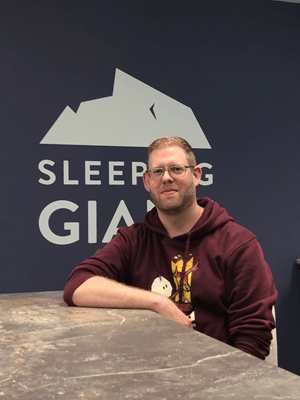 Brendan Muir and his five teammates, who created a multiplayer archery game Arrow Heads and launched their own game design company OddBird while still students at Sheridan, are doing some nifty work again. They’ve launched another company, Sleeping Giant, and not only are they developing a new game, Par for the Dungeon, they are sharing the work the team is doing on YouTube.
Brendan Muir and his five teammates, who created a multiplayer archery game Arrow Heads and launched their own game design company OddBird while still students at Sheridan, are doing some nifty work again. They’ve launched another company, Sleeping Giant, and not only are they developing a new game, Par for the Dungeon, they are sharing the work the team is doing on YouTube.
Their devlog, Games Take a LONG TIME to make, is catching quite a few eyes in the gaming community. It has been viewed 28,000 times and the comments section goes way beyond the proverbial bricks and bouquets to genuine brainstorming among game developers.
“We’re recording the development of the game and putting it out on YouTube because we want to share the process of creating it. A lot of devlogs are from single game developers, and there isn’t much content to show how teams get to put together games. We felt it’s something we can contribute to,” says Muir, who founded OddBird along with Joshua Cappelli, Shae Humphries, Cody Romphf, Benjamin Scott and Zack Wolfe while studying in the Bachelor of Game Design program.
Their new company, Sleeping Giant, is a joint venture with independent video game developer and publisher Snowman, best known for Alto's Adventure and Skate City. While OddBird runs the day-to-day business, and leads the creative direction, the partnership allows it to lean on the experience and expertise of Snowman.
The devlog also signals the team’s return to the public eye: For the last three years, they had been working for a major company and though it was exciting, they couldn’t talk about their project. “Unfortunately, that project ended. No one got to see our work and we couldn’t celebrate it with anyone. So we wanted to create a way to share the amazing work that our team does with everyone, whether the game gets released or not,” Muir says.
Sheridan launchpad for entrepreneurship
Muir took the first step towards entrepreneurship in his second year at Sheridan after he and his five classmates created Arrow Heads, which won the Best Overall Game and Best Artistic Achievement at the 2016 Level Up: Student Showcase. It also won first place in the Entertainment Software Association of Canada student competition and was a semi-finalist at the 2016 Adobe Design Achievement Awards.
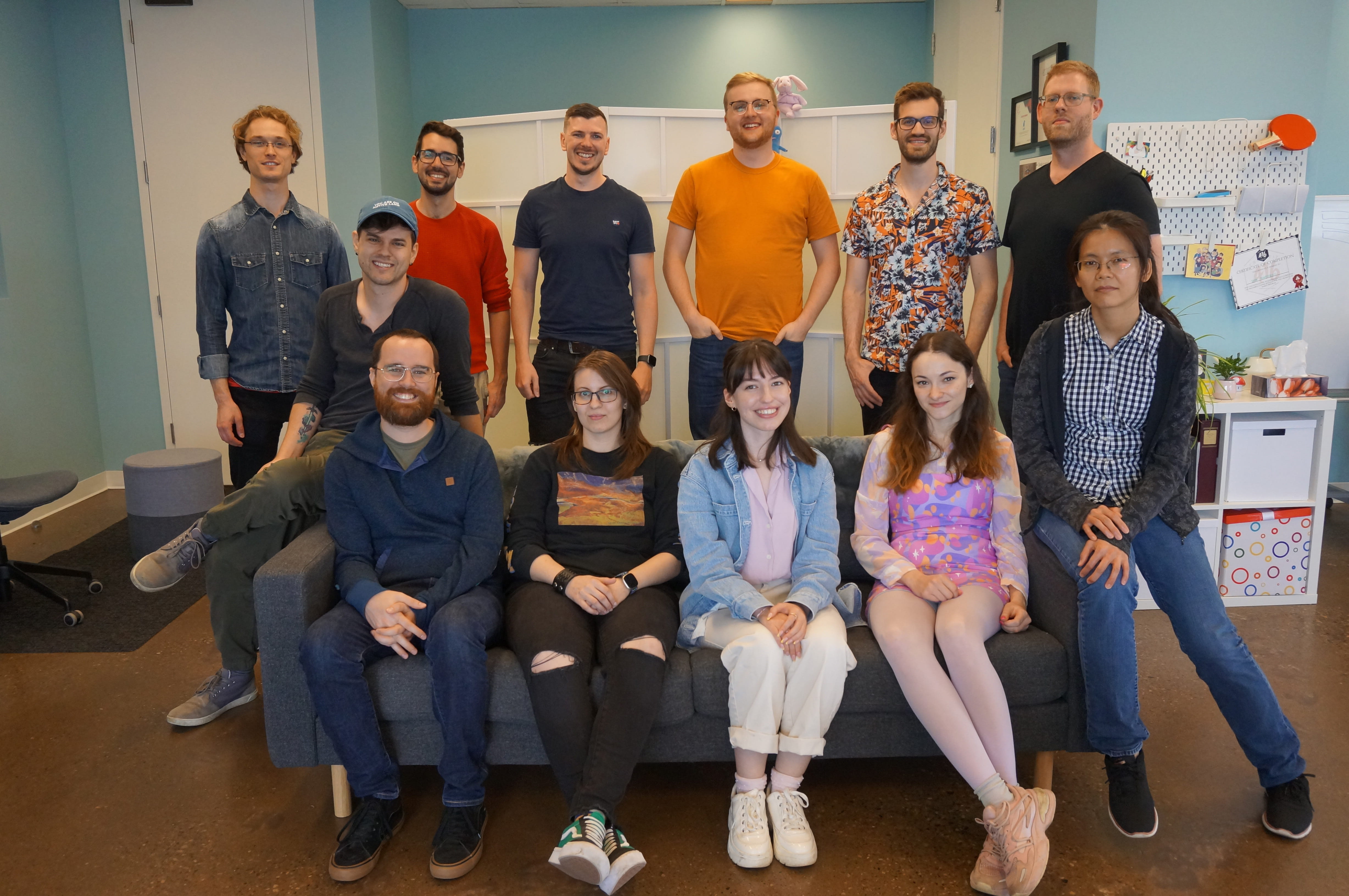
The group, encouraged by their professors, wanted to develop the game further and release it for game consoles. However, that required them to be incorporated as a company. “I guess we kind of fell into the entrepreneurship aspect of it and formed OddBird. We had a lot of support from faculty members who taught us how to come up with a business plan, and what it actually meant to own and operate a business,” says Muir.
Edge helps with resources, mentorship
While the help the team received during the program was informal, upon graduation they were given all-round support to develop their business at EDGE, Sheridan’s start-up incubator that offers resources, mentorship, and other supports for early-stage entrepreneurs and changemakers.
“It was a really great space and the six of us could work together and get mentorship in different aspects of the business. There were people to guide us throughout and help us get answers to our questions about marketing, hiring and health benefits. We learned a lot,” he says.
“For game design, or any creative field, while entrepreneurship can be difficult, it is very rewarding. The main thing is just passion. If you believe in yourself and you put in the effort and the drive to do it, you can achieve it.” – Brendan Muir
The team at OddBird has since created another game, Farm Punks, and worked for clients such as Beautiful Glitch, Laundry Bear and Those Awesome Guys. They also worked with tech company Avara to create assets that were used in the Anthropocene exhibit on display at the Art Gallery of Ontario.
Muir says entrepreneurship, though challenging, provides creative freedom. “I think for game design, or any creative field, while entrepreneurship can be difficult, it is very rewarding. The main thing is just passion. If you believe in yourself and you put in the effort and the drive to do it, you can achieve it. There's a lot of resources to help you out like EDGE, and different sources of funding from the government. Take the leap: the only thing that's stopping you is you.”
Anu Raina: Designed for limitless creativity
Craft and Design, Fabrics ’10
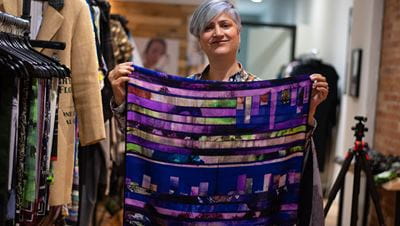 Anu Raina’s Oakville boutique is a foray into the soul of an artist. The designer tells her personal stories in fabric, skillfully weaving emotions into the clothes she creates.
Anu Raina’s Oakville boutique is a foray into the soul of an artist. The designer tells her personal stories in fabric, skillfully weaving emotions into the clothes she creates.
Her TO2 Collection, with dresses and scarves emblazoned with Toronto’s iconic skyline and the TTC map, is her joyful tribute to the city which embraced her as an immigrant. The Remnants Collection speaks to her nostalgia for Kashmir, her grandmother, and the life she left behind. Remnant 2 is her pushback against grief, reflecting her desire to move on.
A stark white canvas jacket, on which loved ones can write messages, owes its creation to her sombre thoughts about separation and the need for comforting keepsakes during the pandemic. Each of her lovely scarves captures a sight, a sound, or a thought that’s hers and hers alone. Every one of her creations carries her name, perhaps lost somewhere in the vibrant prints but always there.
Raina is forever filtering her experiences to create, bringing a uniqueness to her designs that are coveted by connoisseurs of high fashion. As an entrepreneur running her own show, nothing constraints her creativity. “When you're working for somebody else, you are helping them build their dream. I need to tell my own story instead of helping other people tell their story. I know it's not an easy path, but that's what I wanted to do. My stories have always been personal, so I'm the only one who can really interpret them into designs and clothes,” she says.
It was Raina’s unbridled urge to give expression to herself through art that first brought her to Sheridan. She had been unable to find a job after immigrating to Canada from India despite a degree from the University of the Arts - London College of Fashion, and she had been focused on raising her two young kids. “I wanted to do something more and went to Sheridan looking for a part-time course. But then I saw the work of some design students, and I was just amazed. I was like, ‘I can do that!’”
Entrepreneurship allows dreams to flourish
Instead of pursuing a part-time course, Raina joined the Textile program, determined to excel. “I am what I am today, thanks to Sheridan. I spent the most creative years of my life at Sheridan. It was an incredible experience, and every day was beautiful, just full of inspiration,” she says.
A brilliant student, Raina graduated from Sheridan with high honours after interning with the famous Canadian textile designer Virginia Johnson. She was selected as an Artist-in-Residence at the Harbourfront Centre in Toronto and her artwork, depicting her mother, was chosen to be exhibited at Pearson International Airport. The same year, she showcased her hand-printed, hand-dyed collection of ready-to-wear that she had made at Sheridan, at the Toronto Fashion Week.
“I need to tell my own story instead of helping other people tell their story. I know it's not an easy path, but that's what I wanted to do. My stories have always been personal, so I'm the only one who can really interpret them into designs and clothes.” – Anu Raina
“After that, I started selling locally. I was printing scarves at Harbourfront Centre and selling to the stores on Queen Street,” she says. She went to the Accessories Circuit Show in New York and started selling wholesale in the USA and across Canada. She built her own website for online sales, and at a time when small businesses were closing shop during the pandemic, she opened up her boutique in downtown Oakville.
It was a trial by fire, and Raina came through on the strength of her own resilience and the support of the Oakville community.
Believe in yourself
“My neighbours, people in the community, bought from me only to keep my business going,” she says. The experience led her to create the Wedgewood Collection – the colours of which are inspired by the #DTOAKVILLE sign in Oakville Town Square – as a tribute to her community.
Raina says she jumped into entrepreneurship with both her feet. She was confident that she’d make it on her own, but unprepared for many of the difficulties she faced.
“When you start out, there are so many challenges: there are financial challenges; you don't have a network system; you don't have a supply chain system. I just jumped right in and said, ‘okay, I'm not wasting any more time doubting myself. I just need to do this.’ It has been quite a journey, but I have enjoyed every moment of it,” she says.
Raina says aspiring entrepreneurs should live out their dreams. “Don't wait. You need to believe in what you're doing. If you don't, nobody else will. Just go out and tell your stories.”
Banner Photo: Anu Raina (Crafts and Design Fabrics ’10) at her boutique in downtown Oakville. (Photo by Ryan Kelly)
Media Contact
For media inquiries, contact Sheridan’s Communications and Public Relations team.



